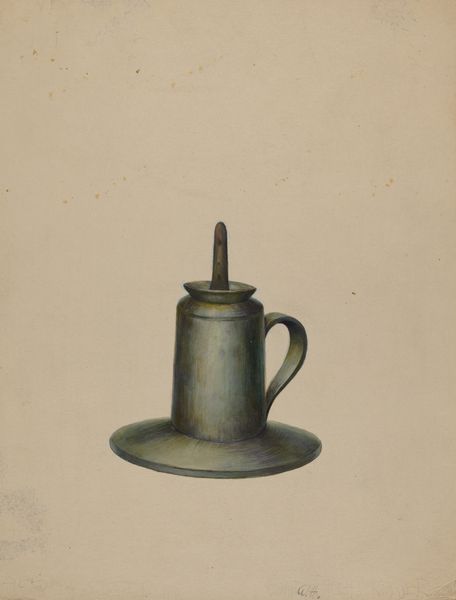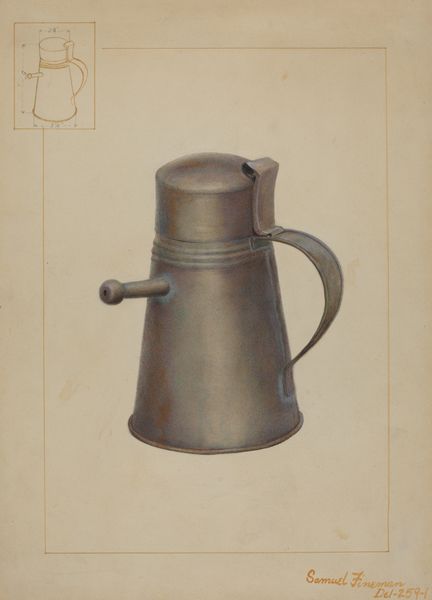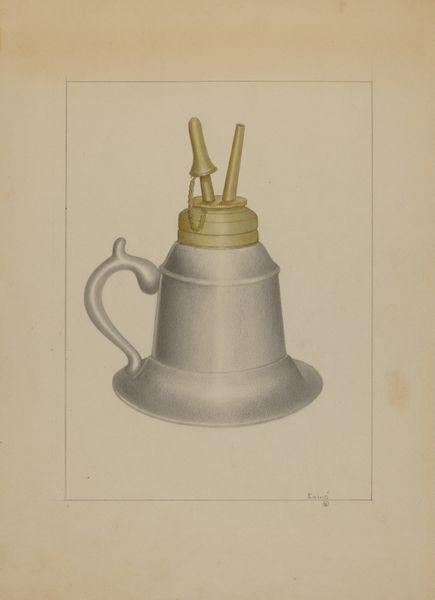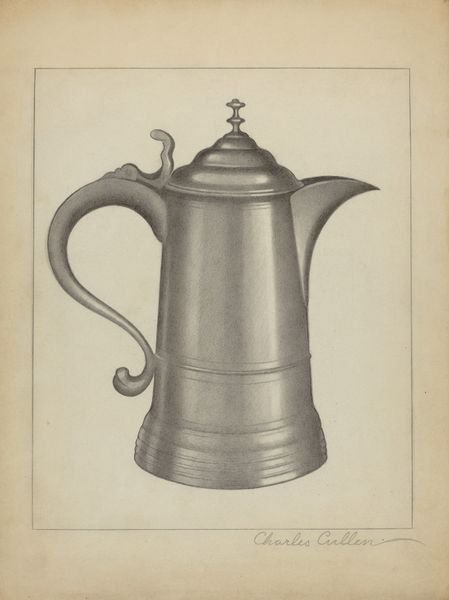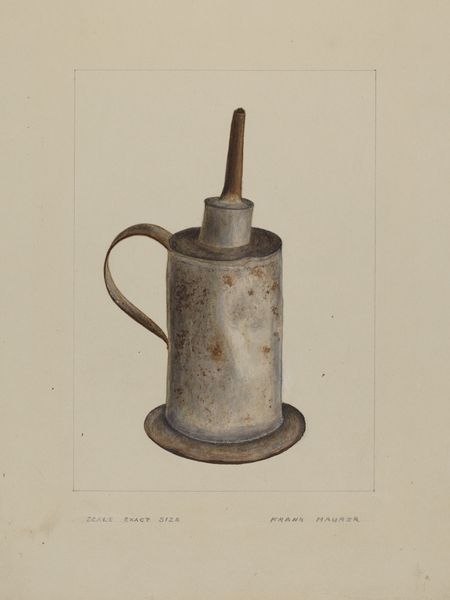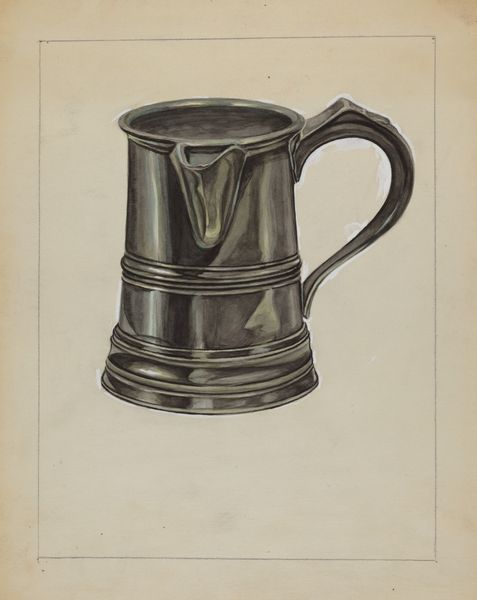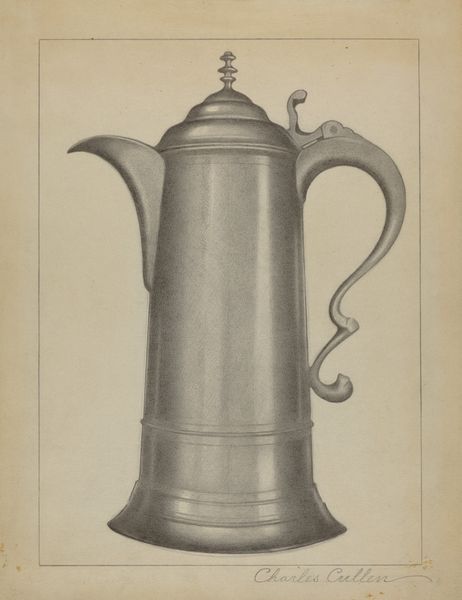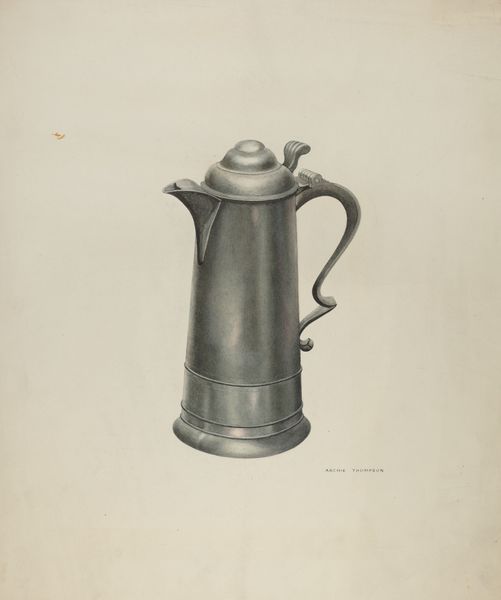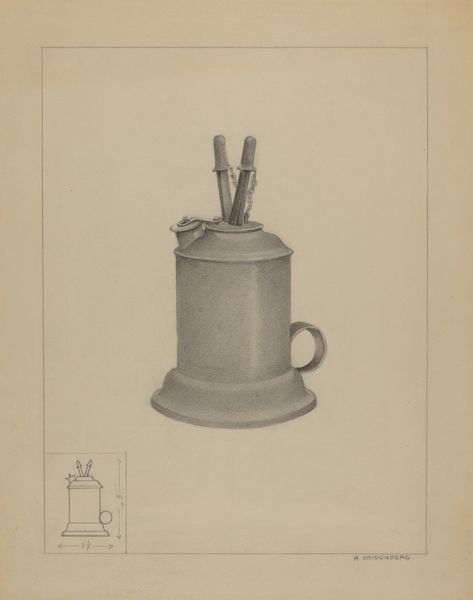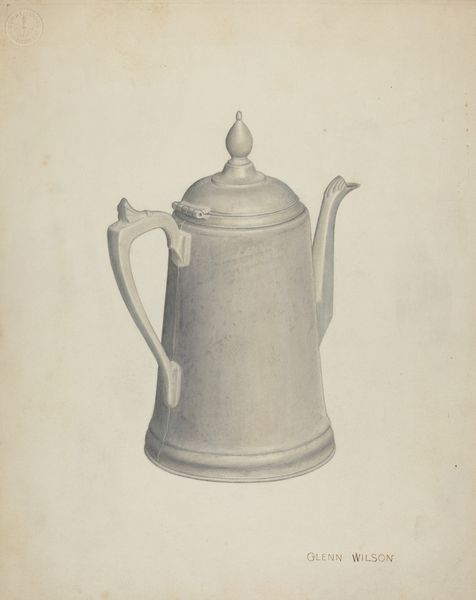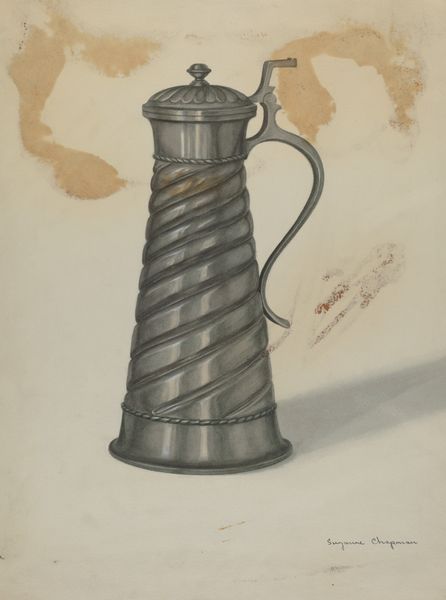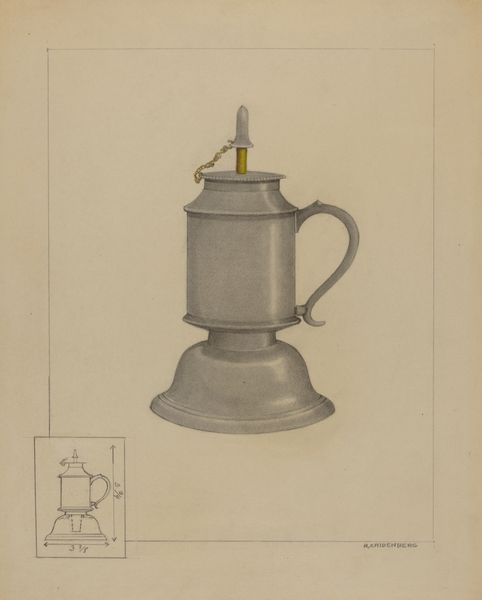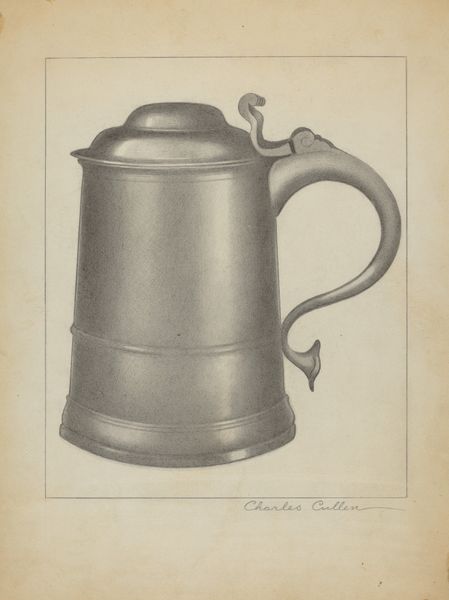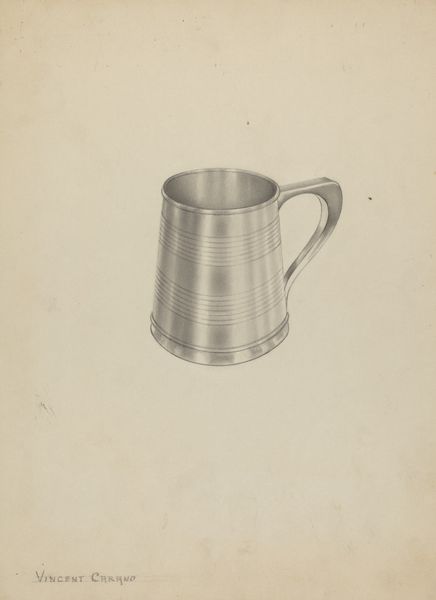
drawing, pencil
#
drawing
#
pencil drawing
#
pencil
Dimensions: overall: 29.9 x 22.1 cm (11 3/4 x 8 11/16 in.)
Copyright: National Gallery of Art: CC0 1.0
Editor: So, we're looking at "Whale Oil Lamp," a pencil drawing from around 1938 by James M. Lawson. I'm struck by how precisely rendered it is – it almost feels like a technical illustration rather than a drawing meant to be artistic. What stands out to you about this piece? Curator: That sense of technical precision is key. Think about what purpose these types of drawings often served. It's quite possible this drawing was intended to document a particular historical object for preservation. Was this meant for an antique collector's inventory, or perhaps museum cataloguing? The lamp's image transcends merely portraying a lamp; it preserves knowledge, transforming an ordinary household object into an artifact laden with cultural relevance. Editor: So it's about the preservation of the past as much as it is about the aesthetics of the lamp? Curator: Precisely. And the choice of pencil, a readily available and relatively inexpensive medium, speaks to accessibility and democratic ideals of documentation. Also consider: why document a whale oil lamp? Whale oil fueled much of the 19th century. Drawing it highlights this legacy. Do you think this selection indicates concern for that lost, extracted resource? Editor: It does make you consider what's lost. Seeing it depicted with such care feels almost like a memorial. And the image also draws my attention to current use of resources and historical context. Curator: It prompts us to think about those political and cultural ties. That drawing acts not only as an artistic rendition but as a powerful historic witness and raises questions about our ongoing social values around nature. I wonder what you are inspired to discover further, with that in mind? Editor: I definitely want to learn more about how museums used these kinds of drawings for their collections in that era. It shifts how I see this from a simple drawing to an archive piece. Curator: Excellent. Understanding the context opens a whole new dimension of meaning. I now know you’ll look deeper, editor!
Comments
No comments
Be the first to comment and join the conversation on the ultimate creative platform.
